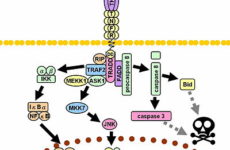Introduction
It has never been easier to edit genes, the CRISPR / Cas9 technology does it possible with a very simple biological system and with great potential in terms of health, agriculture, bioindustry, etc. It is a technology capable of identifying and repairing the defective DNA sequences in patients suffering from diseases of origin such as Huntington or type I diabetes. It also serves to prevent and control viral infections such as HIV or hepatitis. Likewise, it can be used in microorganisms and in plants or animals to remove charac -undesirable phenotypes, even when the organism is an adult. These are, among others, the applications that the CRISPR / Cas9 system has, and give an idea of its great potential. It is a tool so simple and economical that it can be used by anyone who knows molecular biology, so its effect, in the words of researcher Dana Carroll, is that it has “democratized the Gene editing technique CRISPR Available.
HOW CRISPR GENE EDITING WORKS
This is a very important discovery for the applications of genetic manipulation, so much so that the CRISPR technique was considered the most relevant scientific advance for the journal Science in 2015. The funny thing is that Mojica came to it by chance.
The scientist from Alicante Francis Mojica (1963) had been studying repeated sequences in the DNA of archaea and bacteria since 1995, when, in the summer of 2003, he enjoyed his “eureka moment”. He discovered that, in the genome repeats of bacteria, there were spaces with fragments from viruses or other invading elements. For this reason, he came to the conclusion that the bacteria had their own immune system, that is, they were able to “get vaccinated” against a virus.
The discovery was published in 2005 and is considered a genetic editing technique with an important therapeutic potential. Many laboratories are already working with this technique, but the most leading are located in the USA and China.
In studies and research in laboratories has been able to correct diseases in mice thanks to the CRISPR technique. In addition, this technique also allows correcting defective genes linked to human diseases and designing strategies against cancer.
Gene mutation
In June 2016, the USA approved the first clinical trial of the CRISPR technique to check whether it is safe in the treatment of patients with cancer. This essay was funded by Sean Parker, the former president of the social network Facebook. In total, he invested 220 million euros in the creation of a foundation to promote immunotherapy against cancer.
In this clinical trial, T lymphocytes (a type of white blood cell) were extracted to 18 patients and then, with the CRISPR technique, three genes of each were modified.
But it has been in China where cells have been injected for the first time with genes that have been modified with the CRISPR-Cas9 technique. This trial, led by oncologist Lu You, from Sichuan University, focused on a patient with aggressive metastatic lung cancer who had not responded to chemotherapy.
GENETIC MANIPULATION OF PLANTS
To transfer DNA to a plant, various vectors are used, which serve as a transmitting vehicle, circumventing the cellular mechanisms that would normally prevent the incorporation of strange genetic information. The most commonly used vectors are bacterial plasmids, small circular molecules of DNA present in many bacteria, which have great facility to migrate and recombine and which bacteria use to exchange genetic information. Also used are mutilated viruses (in which potentially harmful genetic information has been removed), which have a large invasive capacity and can incorporate their own genetic information into the DNA of the plant.
The foreign gene that is interesting to transfer is inserted in the mutilated virus or in plasmids, generally of the bacterium Agrobacterium tumefaciens, which in Nature colonizes a wide range of plants and transfers its own DNA to the host plant cells, forming tumors that we know with the name of guts. A culture of plant cells is then infected with the recombinant virus or with mutilated strains of a tumefaciens carrying the plasmid with the transgene. The foreign DNA can also be introduced into the cells by microinjection, by electroporosis or by bombardment with micro projectiles coated with recombinant plasmids.
In all cases, the transferred foreign DNA must be accompanied by a “promoter” genetic sequence that activates its expression in the host cell. The promoter is the switch on and off controls when and where the gene is expressed in the plant. The promoters most used in genetic engineering come from viruses and are very powerful promoters, since their function is to activate the foreign gene, which has to circumvent the regulatory mechanisms of the host cell. To date most of the promoters are constitutive, which activate the gene during the entire biological cycle of the plant and in most tissues.



